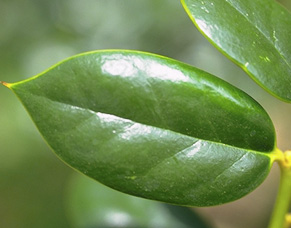
HOW A LEAF WORKS
Leaves are like small factories that produce food for the plant. Different parts of the leaf have different jobs. The veins in a leaf are bundles of tiny tubes that carry water and minerals to the leaf and return food from the leaf to the rest of the plant. Veins also help to support the leaf.
On the underside of the leaf are small openings or pores called the stomata. The stomata serve as the lungs of the leaf allowing air to enter. The stomata allow the evaporation of water and the release of oxygen during the night.

The outer layers of the leaf are covered with a waxy layer which prevents the leaf from drying out.
Leaves are green because they contain small bodies in the cells called chloroplasts. The chloroplasts contain a green pigment called chlorophyll. This green material gives the leaf its colour.
With the help of chlorophyll and energy from the sun, a leaf can change lifeless substances into food. This process is called photosynthesis. Plants need water (H2O) and carbon dioxide (CO2) to make food through the process of photosynthesis. The water is gathered by the plant's roots. Carbon dioxide is gathered from the air through the stomata.
The leaf uses chlorophyll and sunlight to change the water and carbon dioxide into oxygen and glucose (sugar). This sugar is mixed with water and sent to other parts of the plant to be used by the plant as food. The oxygen is released into the air through the stomata.